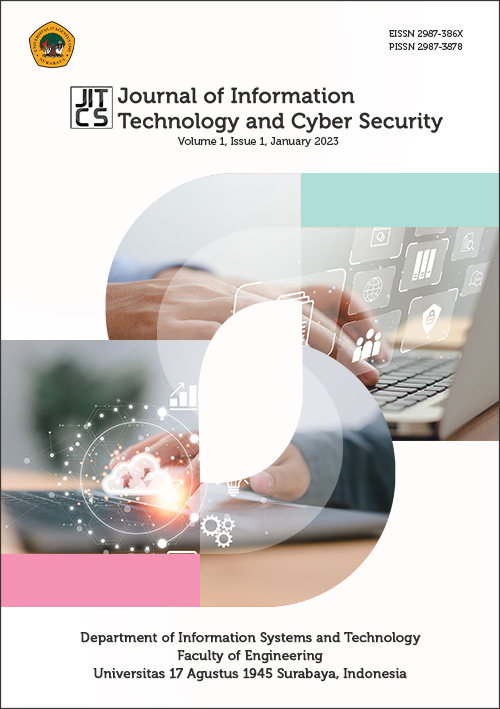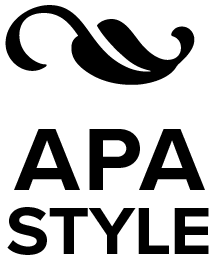Recommendation System Using the K-Nearest Neighbor Approach: A Case Study of Dual Camera Quality as a Smartphone Selection Criterion
Abstract
Many smartphones today need to be more precise about choosing one that suits the user's needs. In fact, smartphone sellers sometimes need help recommending smartphones that suit buyers' needs. Generally, buyers search for smartphone specifications with keywords they desire, but the results appear different from what they expected. Users need the main specifications, such as Random Access Memory (RAM) and Read Only Memory (ROM) capacity, battery, and high camera quality. This research aims to implement the K-Nearest Neighbor (KNN) algorithm for recommendation smartphone selection based on the criteria mentioned. The data test results show that the combination of KNN with four criteria has good performance, as indicated by the accuracy, precision, recall, and f-measure values of 95%, 94%, 97%, and 95%, respectively.
Downloads
References
Adeniyi, D. A., Wei, Z., & Yongquan, Y. (2016). Automated web usage data mining and recommendation system using K-Nearest Neighbor (KNN) classification method. Applied Computing and Informatics, 12(1), 90–108. https://doi.org/10.1016/J.ACI.2014.10.001
Bangun, A. A. A. (2017). Pengaruh Brand Ambassador Terhadap Brand Image Serta Dampaknya Terhadap Keputusan Pembelian (Studi pada Pengguna Smartphone Oppo di Kota Medan). Universitas Sumatera Utara. https://repositori.usu.ac.id/handle/123456789/17167
Dio, R. G. R., Bahri, S., Kiswandono, A. A., & Supriyanto, R. (2021). Validasi Metode Fotodegradasi Congo Red Terkatalis ZNO/Zeolit Y Secara Spektrofotometri UV-VIS. Analit: Analytical and Environmental Chemistry, 6(2), 134–144. https://doi.org/10.23960/aec.v6.i2.2021.p134-144
Fauzan, R., Saberan, S., & Ridwan, M. (2017). Sistem Pendukung Keputusan Pemilihan Smartphone Menggunakan Metode Simple Additive Weighting (SAW). Prosiding SNRT (Seminar Nasional Riset Terapan).
Gafoor, A., Srujana, A. L., Nagasri, A., Durgaprasad, G. S. S., & Dasari, L. S. K. (2022). KNN based Entertainment Enhancing System. 2022 6th International Conference on Trends in Electronics and Informatics (ICOEI), 1056–1061. https://doi.org/10.1109/ICOEI53556.2022.9777225
Harsiti, H., & Aprianti, H. (2017). Sistem Pendukung Keputusan Pemilihan Smartphone dengan Menerapkan Metode Simple Additive Weighting (SAW). JSiI (Jurnal Sistem Informasi), 4, 19–24. https://doi.org/10.30656/JSII.V4I0.372
Kemkominfo, B. (2017). Survey Penggunaan TIK 2017. https://literasidigital.id/buku/797-2
Kowsari, K., Meimandi, K. J., Heidarysafa, M., Mendu, S., Barnes, L., & Brown, D. (2019). Text Classification Algorithms: A Survey. Information, 10(4). https://doi.org/10.3390/info10040150
Lee, G. T., Nam, H., Kim, S.-H., Choi, S.-M., Kim, Y., & Park, Y.-H. (2022). Deep learning based cough detection camera using enhanced features. Expert Systems with Applications, 206, 117811. https://doi.org/10.1016/j.eswa.2022.117811
Peterson, R. A. (2021). Finding Optimal Normalizing Transformations via bestNormalize. The R Journal, 13(1), 310–329.
Putra, A. E. (2019). Sistem Rekomendasi Pemilihan Handphone Menggunakan K-Nearest Neighbor (KNN).
Rajput, N. K., & Grover, B. A. (2022). A multi-label movie genre classification scheme based on the movie’s subtitles. Multimedia Tools and Applications, 81(22), 32469–32490. https://doi.org/10.1007/s11042-022-12961-6
Rakshit, P., Saha, S., Chatterjee, A., Mistri, S., Das, S., & Dhar, G. (2023). A Popularity-Based Recommendation System Using Machine Learning. Machine Learning in Information and Communication Technology, 498, 143–150. https://doi.org/10.1007/978-981-19-5090-2_14
Saputra, B. D., Subagja, M. H., Aldiansyah, M., Setiawan, W., & Rosyani, P. (2021). Sistem Pendukung Keputusan Pemilihan Smartphone dengan Metode Simple Additive Weighting (SAW) | Scientia Sacra: Jurnal Sains, Teknologi dan Masyarakat. Scientia Sacra, 1(3). http://www.pijarpemikiran.com/index.php/Scientia/article/view/67
Sari, R. P., & Saputra, B. (2021). Sistem Pemilihan Smartphone Berdasarkan Spesifikasinya Pada Mahasiswa Sistem Informasi Universitas Tanjungpura Menggunakan Metode Simple Additive Weighting (SAW). Jurnal Sistem Komputer Dan Informatika (JSON), 2(3), 329–338. https://doi.org/10.30865/json.v2i3.3038
Setiaji, B. R., Utama, D. Q., & Adiwijaya, A. (2022). Smartphone Purchase Recommendation System Using the K-Nearest Neighbor (KNN) Algorithm. Jurnal Media Informatika Budidarma, 6(4), 2180–2186. https://doi.org/10.30865/MIB.V6I4.4753
Setiawan, R. R., & Nurkamid, M. (2012). Teknologi Web Semantik Untuk Bibliografi Perpustakaan. Semantik, 2(1). http://publikasi.dinus.ac.id/index.php/semantik/article/view/60
Suyanto, S., Yunanto, P. E., Wahyuningrum, T., & Khomsah, S. (2022). A multi-voter multi-commission nearest neighbor classifier. Journal of King Saud University - Computer and Information Sciences, 34(8), 6292–6302. https://doi.org/10.1016/J.JKSUCI.2022.01.018
Thammasiri, D., Delen, D., Meesad, P., & Kasap, N. (2014). A critical assessment of imbalanced class distribution problem: The case of predicting freshmen student attrition. Expert Systems with Applications, 41(2), 321–330. https://doi.org/10.1016/j.eswa.2013.07.046
Xiong, L., & Yao, Y. (2021). Study on an adaptive thermal comfort model with K-nearest-neighbors (KNN) algorithm. Building and Environment, 202, 108026. https://doi.org/10.1016/J.BUILDENV.2021.108026
Zhang, S., Li, X., Zong, M., Zhu, X., & Cheng, D. (2017). Learning k for kNN Classification. ACM Transactions on Intelligent Systems and Technology, 8(3). https://doi.org/10.1145/2990508
Zhang, S., Li, X., Zong, M., Zhu, X., & Wang, R. (2018). Efficient kNN classification with different numbers of nearest neighbors. IEEE Transactions on Neural Networks and Learning Systems, 29(5), 1774–1785. https://doi.org/10.1109/TNNLS.2017.2673241
Zhu, X., Ma, B., Su, G., Hu, Y., & Liu, D. (2023). Blank design method for C-section profile ring rolling based on FEM and RSM. Alexandria Engineering Journal, 65, 649–660. https://doi.org/10.1016/J.AEJ.2022.10.007
Copyright (c) 2022 The Author(s)

This work is licensed under a Creative Commons Attribution-NonCommercial-ShareAlike 4.0 International License.
Copyright Notice based on COPE (Committee on Publication Ethics) for JITCS: Journal of Information Technology and Cyber Security
-
Ownership and Copyright:
- JITCS: Journal of Information Technology and Cyber Security respects the intellectual property rights of authors. The copyright for individual articles published in JITCS is retained by the respective authors, unless otherwise specified.
- The articles published in JITCS are licensed under a Creative Commons Attribution-NonCommercial-NoDerivatives 4.0 International License (CC BY-NC-ND 4.0), which permits use and distribution in any medium, provided the original work is properly cited, the use is non-commercial, and no modifications or adaptations are made.
- JITCS serves as the initial publisher of the articles, providing them with the first publication platform.
-
Permissions and Usage:
- Distribution for Non-Commercial Purposes: Permitted: Users are allowed to distribute the article for non-commercial purposes, provided the original work is properly cited and no modifications or adaptations are made.
- Distribution for Commercial Purposes: Not Permitted: The article may not be distributed for any commercial purposes without obtaining prior written permission from the author(s).
- Inclusion in a Collective Work (e.g., Anthology) for Non-Commercial Purposes: Permitted: Users are allowed to include the article in a collective work, such as an anthology, as long as the use is non-commercial and the work remains unchanged.
- Inclusion in a Collective Work for Commercial Purposes: Not Permitted: The article may not be included in any collective work or anthology intended for commercial purposes without prior permission from the author(s).
- Creation and Distribution of Revised Versions, Adaptations, or Derivative Works (e.g., Translation) for Non-Commercial Purposes: Not Permitted: Users may not create or distribute revised versions, adaptations, or derivative works, including translations, for non-commercial purposes.
- Creation and Distribution of Revised Versions, Adaptations, or Derivative Works for Commercial Purposes: Not Permitted: Users may not create or distribute revised versions, adaptations, or derivative works, including translations, for commercial purposes.
- Text or Data Mining for Non-Commercial Purposes: Permitted: Users are permitted to engage in text or data mining of the article for non-commercial research purposes, provided the original work is properly attributed.
- Text or Data Mining for Commercial Purposes: Not Permitted: Users may not engage in text or data mining of the article for commercial purposes without obtaining explicit permission from the author(s).
-
Attribution and Citation:
- Proper attribution and citation of the published work should be provided when using or referring to content from JITCS. This includes clearly indicating the authors, the title of the article, the journal name (JITCS), the volume/issue number, the publication year, and the article's DOI (Digital Object Identifier) when available.
- When adapting or modifying the published content, proper attribution to the original source should be given, and the adapted or modified content should be shared under the same CC BY-NC-ND 4.0 license.
-
Plagiarism and Copyright Infringement:
- JITCS considers plagiarism and copyright infringement as serious ethical violations. Authors are responsible for ensuring that their submitted work is original and does not infringe upon the copyright or intellectual property rights of others.
- Any allegations of plagiarism or copyright infringement will be investigated promptly and thoroughly. If proven, appropriate actions, including rejection of the manuscript, retraction of the published article, or other corrective measures, will be taken.
-
Open Access Licensing:
- JITCS supports open access publishing and encourages authors to consider publishing their work under the CC BY-NC-ND 4.0 license to promote the dissemination and use of knowledge in the field of information technology and cyber security.
- The specific terms and conditions of the CC BY-NC-ND 4.0 license will be clearly indicated on the published articles.
-
Policy Review: This Copyright Notice will be periodically reviewed and updated to ensure its continued relevance and compliance with copyright laws, ethical standards, and open access principles in scholarly publishing. Any updates or revisions to the notice will be communicated to the relevant stakeholders.
By adhering to this Copyright Notice, JITCS aims to protect the rights of authors, promote proper attribution and citation practices, and facilitate the responsible and legal use of the published content in accordance with the CC BY-NC-ND 4.0 license.




